‘Night of the Living Dread’ – a conversation with Ida Melum
UPDATE 12/03/2022 – to mark the film’s recent nomination for Best Animated Short, BAFTA have put Night of the Living Dread up in full (watch below).
Hailing from Norway and with a background in acting, up-and-coming director Ida Melum cemented an enthusiasm for animation when studying at London’s Middlesex University, during which she further developed her stop-motion skills working on the acclaimed National Film and Television School films Poles Apart (dir. Paloma Baeza and Ser En Low) and Facing It (dir. Sam Gainsborough). After earning her BA, Ida pursued a Master’s degree in Directing Animation at the NFTS where she expanded her stop-mo skillset making the puppet animated Shopped, the pixilation piece COP (Character of Place) and the plasticine cutout/2D/multiplane short Ovary Acting. Her final graduation film Night of the Living Dread brings Ida’s gift for storytelling, observational comedy and adventurous set pieces together with a full team of talented artists. We follow the nighttime tribulations of Ruby, a young scientist whose attempts at sleep are obfuscated by an ever-relatable onslaught of embarrassing memories. The film, co-written by Hannah Kelso and Laura Tunbridge with production design by Milly White and animation headed up by Rich Farris, effectively combines fabric-textured puppets with 2D facial animation, elaborate transitions, a sophisticated eye for effective cinematography and a keen intuition toward comic timing. Presently screening in two programmes at this month’s Encounters Film Festival, Skwigly were delighted to meet Ida Melum and learn more about the film’s journey.
Has animation always been an area of interest to you?
I think I stumbled upon it by accident, to be honest. I grew up in Norway and one Christmas my mum bought me this Lego set that came with a web camera. That was my first introduction to stop-motion, when I was eight. Then I always had a big interest in film and acting, primarily, but I kept returning to animation whenever I could. I pursued acting a lot until I turned 19, when I realised it’s quite a harsh career. Then when I was applying for courses my friend came across an animation course at Middlesex University. It just had all the things in one course that I liked doing, which was filmmaking and art and storytelling. So I just applied and was really lucky to get in and kind of rediscovered stop-motion there. I met some really good tutors there – Jonathan Hodgson and Osbert Parker – and we were really encouraged to be not just animators, but also storytellers and directors as well.
I also met Robert Bradbrook at Middlesex, he was our main tutor in second year and I knew that he then worked at the National Film and Television school. So he would also get us Middlesex students to help out on the grad films that were going on, which was also amazing being able to come to the facilities and see how that all worked.
Did that help determine you then going to the NFTS for the MA?
First of all, I was a big fan of the films that came out of the school. A lot of them were just really great stories. They were funny, they were original and I was lucky to have worked on a couple of them as well, like Poles Apart and Facing It. So it was great to see how the films were made.
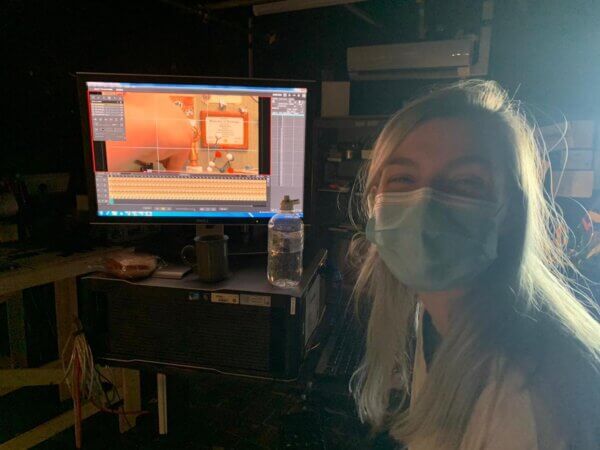
Image courtesy of Ida Melum
Did you work on those films before or after you had started there?
That was before I went there. So it was just a good opportunity to see how it worked and I really liked it.
Were there any elements of those films’ production that had a particular effect on how you’d then approach your own films?
I think they’re both great examples of films that, if anything, just put more pressure on what I wanted to achieve. One thing I really liked, when I was on Facing It, was that it seemed to me that the director had a really, really good relationship with his editor. I’d never had an editor before, so it was lovely to see that. Everyone was so engaged, it really was like everyone was living and breathing film for two years. I thought that was really inspirational. They both came out so beautifully and brilliantly that it just made me really inspired and want to go there.
So when you were at the NFTS I gather you made a few films there before this latest one. Is that the sort of current standard, to produce three or four films during the MA?
Yeah, I don’t know how it was before but now we do a couple of workshops in the first year that, funnily enough, are just called Project One, Project Two and Project Three. So by the time you get to your grad film, you should have gone through three-to-four projects, I think, in total. The nice thing about it is that you slowly get introduced to more and more crew, so you work with the sound designer and then you work with a composer and work with an editor. And so you slowly kind of build that up, then you have many workshops with the modelmakers as well. But it’s still a bit of a shock when you suddenly go from a team of three or four to a team of twelve people. It’s definitely a big jump, it’s quite intimidating. I was lucky, I had a really good team.
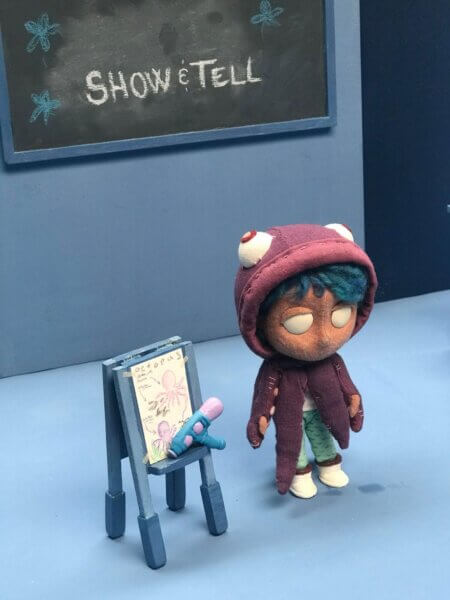
Image courtesy of Ida Melum
I get the impression the shorter films are good outlets as far as exploring other methods of stop-motion other than armatured puppets – was that your main objective, to try different things?
I think for me, definitely. I’m probably not the biggest on experimenting, I have a tendency to stick with what I know and the only thing I knew was puppets. So the first stop-motion film was nice as I could develop my puppet-making skills. When I came to the NFTS I developed that a lot further but I was still doing traditional armatures and everything. So when the next project came around I tried multiplane for the first time and I absolutely loved it. That was my first time combining 2D and stop-motion and I really liked it, even though it’s quite time consuming. I just felt that the 2D made me a little bit more brave as an animator, it enhanced my animation and I just had more fun with it. So yeah, that was probably one of the best finds for me.
Having cut your teeth on them, would you work in pixilation or multiplane on future projects?
I don’t know if pixilation would be my first choice but I would love to try it again. Multiplane – absolutely, I thought it was really fun. I didn’t even build anything, I was just going to cafes and taking photos of these sets, then I was printing them out and layering them. Seeing that I could put together a film really quickly, with very little means, I would absolutely love to do that again.
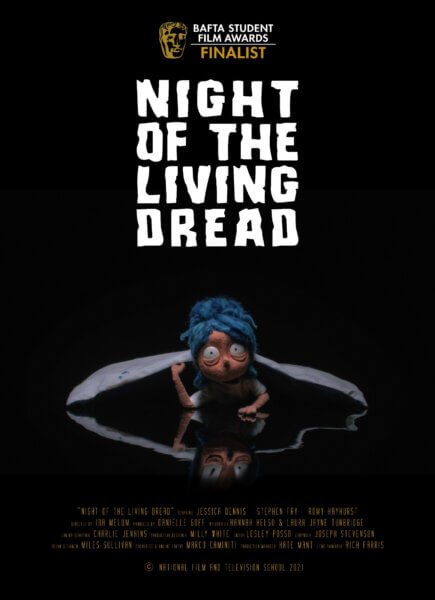
Night of the Living Dread poster (Ida Melum/NFTS)
Night of the Living Dread really stood out as being quite distinctly relatable above all else. I’m definitely an occasional sufferer of my brain just keeping me awake, torturing me with shit from years ago. Are you similarly afflicted?
Absolutely! I’m sorry you’re part of the club but I’m glad I’m glad you relate to the film. I wish it wasn’t but I think it’s become even more common to talk about mental health, hasn’t it? I think anxiety is one of those that’s just become really common. And it turns out there’s a lot of us that suffered with it. Now my anxiety isn’t rooted as much in the past as it used to be – now it’s a lot more rooted in the future. Maybe that’s me getting a bit older. When I was in my early twenties I would just think about what I’d said at work or think about that one joke that didn’t land at a party and just get completely stuck in the loop. I could have done really well seeing this film when I was a younger adult.
Did you have a hand in the look of the film itself, or was it given over to people at the school who were more design-oriented?
It was, yes. I can, in simple terms, say “I like these colours and I want that look”; very early on I had a clear idea in my head that I wanted it to be quite snappy and I wanted smear frames, I wanted to push those two together as much as I could. I also wanted a softness and a bit of a human touch to it. So I worked really closely with our production designer Milly White, who also worked really closely with the modelmakers. She really made sure that the puppets and the sets really linked well together, I just really trusted her with it, she’s got great taste. I think I picked out the main colours – I wanted [Ruby] to be a bit orange with blue hair, and Milly did most of most of the rest.
I think the biggest challenges were how the memory sequences were going to look, until one day she just came up with these really graphic, simple designs. They all had such a pop in colour and were really bright and fun, which I really liked. So yeah, she absolutely smashed it. It looks great because of Milly and Angela (Merlo Quartaroli) and Maria (Collado Bonú), the modelmakers.
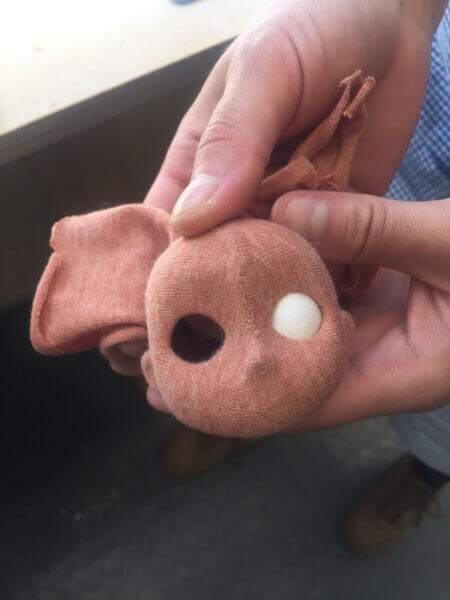
Image courtesy of Ida Melum
Yeah, it’s a really nice, unique look – yet still kind of feels identifiably ‘NFTS’ in that it that feels like there may have been some internal influence from previous NFTS films. Would you say that was the case?
Absolutely. We did look a lot into felt in the beginning but it turned out that wasn’t quite what we were going for. We looked a lot at Edmond, both in terms of puppets and because we were also trying to achieve some transitions here and there; that was the go-to film for that. We ended up actually getting most puppet inspiration from Listen To Me Sing. We just thought the look of that puppet was fantastic, she wasn’t fuzzy all around but she still had that texturey feel to her.
I think I also get a sense that mixed media approaches are always kind of encouraged a bit, like in this case having the 2D faces over the puppets. Was that something that you came up with or was that kind of suggested along the way?
That was something I discovered on Ovary Acting, it was a technique I really liked but I don’t think it’s encouraged because, sadly, it causes a lot of extra work and extra time and the pipelines can easily get complicated. So the school actually encourages us to keep our pipelines as simple as possible and to try and get as much as we can in-camera, but the students tend to do mixed-media all the time anyway. I love the look of it, but it’s a really labour intensive exercise because you basically are rendering things multiple times. When I see what the smear frames add to the film I love it, but it’s also painful to get to that point.
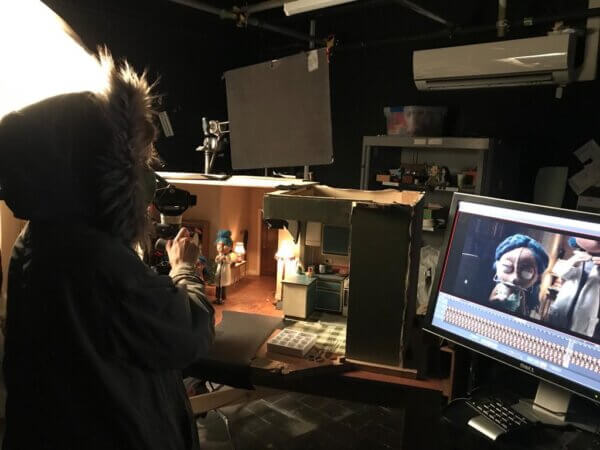
Image courtesy of Ida Melum
What really sells the comedy of it is the precision timing of the gags. They land at the exact right moment and they punctuate scenes so well, which is a hard thing to nail down. Is that all worked out at the animatic stage, or is there room for experimentation down the line?
It was constant, changing the timing. I had such a good relationship with my editor, Lesley (Posso) – honestly I had a good relationship with everyone on my team – but Lesley, in terms of comedic timing, she was an absolute hero on that, she worked so hard. She also worked really hard with us in terms of the animatic, she put so many hours in and suggestions and tried different things. So she knew the film like the back of her hand by the time I was sending her these shots. She said to me that you should write down what makes you laugh the first time you see it, because in eleven months, it’s not going to be funny anymore. I really wish I had done that earlier on, because I watched all the gags so many times and was questioning myself all the time. Like, is anyone going to laugh? Also your main audience is your fellow classmates and their teams, so when you’re seven months into production they have also seen all the gags, so they’re not gonna laugh; you’re sitting there with a quiet audience watching this so-called comedy. But every time I had a bit of a doubt regarding the gags Lesley would fight for it. And she was absolutely right. And she would make sure that they were perfect and that they sat right. For me it was a balance because the emotional journey was more important to the film than to get an extra gag. And she knew that too, so she was constantly protecting that but also trying to make it as entertaining and funny as we could.
Have you since been able to see it at a public screening with a kind of fresh crop of people?
Yeah, we were so lucky that we actually got to have the graduation ceremony at the BFI South Bank in London. We actually had an event where family and friends could come and watch it. It was so lovely to hear them giggle and laugh at places. It was such a celebration as well because it had been a year and a half with on-and-off lockdowns and finally we could all be together in the cinema in London and watch films. Yeah, so that was amazing.
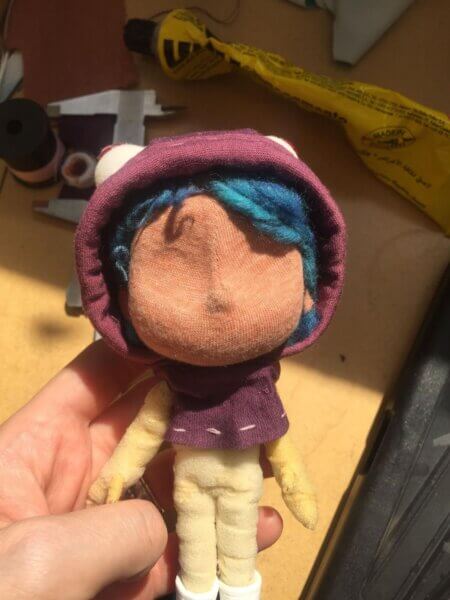
Image courtesy of Ida Melum
So now you have a few films under your belt, what would you say is your ideal scenario, moving forward, work-wise?
I’m just quite curious. I would love to try a commercial to see how that works. I would love, love, love to do a mini series. Maybe a feature when I feel confident enough for that. But also, at the same time, even though it was really intense, I have a couple of film ideas I would love to crack on and do. So maybe a couple more independent films before moving into something bigger.
Night of the Living Dread is screening throughout this month as part of the 2021 Encounters Film Festival‘s animation programme Human Nature and genre programme Comedy 1. See more of Ida Melum’s work at idamelum.com

